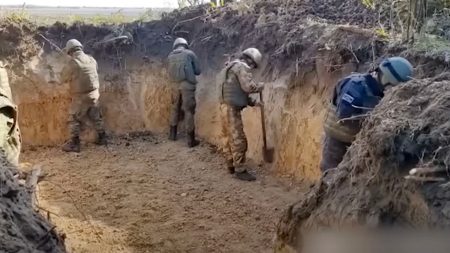A seemingly innocuous photograph of a French Bulldog named Bob became the unraveling thread of a sophisticated £45 million drug trafficking operation. Danny Brown, 57, one of the operation’s ringleaders, unwittingly shared the image with fellow conspirator Steven Baldauf, 64, via the encrypted messaging platform EncroChat. Unbeknownst to Brown, the dog’s collar tag, clearly visible in the photograph, displayed his girlfriend’s phone number. This seemingly minor detail provided National Crime Agency (NCA) investigators with the crucial link they needed to connect Brown to the conspiracy, ultimately leading to the downfall of the entire criminal network. This seemingly insignificant oversight underscores the precarious nature of relying on perceived security measures, particularly in the digital age where even the smallest details can be magnified and exploited.
The criminal operation, meticulously planned and executed, involved smuggling £4 million worth of amphetamines from Southampton to Brisbane, Australia, concealed within the arm of an excavator. To further legitimize the shipment, a fake auction was orchestrated, adding another layer of deception to the scheme. However, the elaborate facade crumbled under the weight of the seemingly innocuous photograph and another “accidental selfie” taken by Baldauf. Believing their communications within EncroChat were impenetrable, the conspirators became increasingly careless, sharing images that inadvertently revealed their identities and locations. Baldauf’s reflected image in a brass door sign, captured in a selfie, provided further evidence linking him to the conspiracy.
The investigation, codenamed Operation Venetic, exposed the group’s intricate web of criminal activity. Beyond Brown and Baldauf, other key players were identified and apprehended. Philip Lawson, 63, responsible for designing the drug concealment mechanism within the excavator and arranging for its modification, received a 23-year sentence. William Sartin, 63, whose industrial unit housed the modified excavator, was also sentenced to 23 years. The sentences, totaling 163 years for the entire group, reflect the severity of their crimes and the extensive reach of their operation.
The unraveling of the drug ring highlights the fragility of criminal enterprises, particularly those relying on supposedly secure communication platforms. The seemingly impenetrable EncroChat, favored by organized crime groups for its encrypted messaging capabilities, proved vulnerable to law enforcement scrutiny. The platform, designed to shield criminal communications behind anonymous handles and encrypted messages, ironically became the instrument of their downfall. The “accidental selfies” and careless sharing of seemingly innocuous information, like a dog’s collar tag, exposed critical vulnerabilities and ultimately led to the dismantling of the entire operation.
The financial repercussions for the convicted criminals extend beyond their lengthy prison sentences. Baldauf was ordered to repay over £1 million, with an additional seven years added to his sentence if he fails to comply within three months. Similarly, Lawson faces an additional three years if he fails to repay the ordered £182,000 within the same timeframe. These substantial financial penalties underscore the commitment of law enforcement to not only dismantle criminal networks but also to strip them of their ill-gotten gains, thereby disrupting the financial incentives driving such illicit activities.
Operation Venetic, leveraging the compromised EncroChat network, represents a significant victory for law enforcement in the ongoing battle against organized crime. The operation led to the dismantling of numerous criminal networks involved in drug trafficking, weapons distribution, money laundering, and other illicit activities. The arrest of 746 individuals and the accumulation of over 500 years in prison sentences demonstrate the scale and impact of this landmark investigation. The success of Operation Venetic serves as a potent deterrent to organized crime, demonstrating that even the most sophisticated encryption technologies can be breached, and the perpetrators brought to justice. It reinforces the message that law enforcement agencies are relentlessly pursuing these criminal enterprises and that the consequences of involvement extend far beyond mere imprisonment, encompassing substantial financial penalties and the disruption of their illicit networks.











